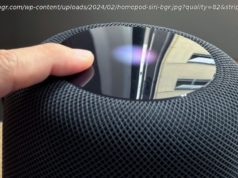Bridge cameras are styled like SLRs, but feature fixed, long zoom lenses. They’re a solid choice for photographers who want a zoom range that can only be reached by carrying several lenses along with an SLR. These are the top performers in our tests.
Big superzoom cameras are still referred to as bridge models in many circles. It’s a vestigial term carried over from the days when the large body style was aimed at photographers who wanted to move up from a pocket point-and-shoot (which, at the time, had limited zoom ranges as a rule) , but weren’t quite ready for an SLR. The idea was that a camera like this would bridge that gap, and perhaps encourage the same photographers to eventually move to an SLR.
In 2017, the term makes less sense, but it’s stuck around. Modern bridge models can vary greatly in features and capabilities. Models with smaller image sensors boast incredibly long zoom ranges, while cameras with larger sensors can’t keep up with 30x pocket zoom cameras like the Panasonic ZS50 in terms of absolute zoom range, but deliver images that truly bridge the gap between compact and SLR quality.
Some bridge cameras pack the same size sensor that you’ll find in a pocket point-and-shoot or a premium smartphone like the Samsung Galaxy S8. You’re not going to see a significant jump in image quality when compared with a pocket model, but you will be able to enjoy zoom ratios in excess of 50x power. Our favorite model, the Canon SX60 HS, sports a 65x lens that covers an ultra-wide (21mm) to an extremely narrow telephoto (1,365mm) angle. It also sets itself apart from many pocket models and smartphones by offering Raw capture, a very solid optical stabilization system, and an electronic viewfinder.
You can go longer when it comes to zoom—the Nikon P900’s 83x zoom lens covers a 24-2,000mm range— but image quality at the extreme telephoto isn’t as good as it is at wider angles, and the camera omits Raw capture.
Going in the other direction, the Panasonic FZ300’s lens is a mere 24x power (25-600mm) , but it maintains an f/2.8 aperture throughout the entire range, and features one of the best EVFs in its class, along with a weather-sealed design and 4K video capture.
Sony started putting 1-inch sensors into cameras in 2012 with the pocketable RX100. It didn’t take long for it to follow with the RX10, which marries a sensor that’s four times as large as you’ll find in most point-and-shoots to a 24-200mm f/2.8 zoom lens. Despite the fairly short range, its incredible lens, the image quality delivered by its 1-inch 20MP sensor, and a superb build earned it a rare five-star rating when it was reviewed.
The original RX10 doesn’t stand so far apart from the crowd these days, but it’s still an excellent performer. Its been joined by two sequels, the RX10 II, which keeps the same lens and adds 4K video and a few other tweaks, and the RX10 III, which has an all-new 24-600mm f/2.4-4 lens that makes it the best camera of its type, although one that carries a premium price tag.
Other 1-inch models to consider include the Panasonic FZ1000, which sacrifices some build quality when compared with the RX10, but offers a solid zoom range for its price.
Canon also has one long-lens entry in its 1-inch series, the G3 X. Its 25-600mm f/2.8-5.6 zoom matches the RX10 III in terms of coverage, but its lack of an electronic viewfinder is a downer, as is its slower focus system. The G3 X is priced aggressively, which may be enough to make budget shoppers overlook some of its shortcomings.
Nikon announced its own 1-inch bridge model, the DL 24-500, last year. But production delays have reared their ugly heads, and there’s currently no estimate as to when it’ll hit the market.
The model that’s best for you depends on your budget, your image quality demands, and just how much zoom range you want. If you’re going on a safari and don’t want to carry a heavy kit, a model like the SX60 HS is a solid bet, as it has a long range and image quality is excellent, especially in bright light.
If you’re looking for a camera that can handle shooting in lower light, a 1-inch model is likely more your speed. You may be turned off by the price, especially that of the RX10 III, but some shooters will find that a camera like this is a better fit than an SLR. If you bought an entry-level SLR and have never moved beyond the 18-55mm starter zoom, you’ll find a 1-inch bridge camera to be a more capable tool for day-to-day photography.






